Posted on 12/7/2023

Nobody likes to see the “Uh-oh kitty face”. If you live in the Midwest and have a vehicle with TPMS, then you are likely to have experience with these systems. Generally, tire pressures change by 1 PSI for every 10°F in ambient temperature change. When we get hit with temperature swing day of 40-50°F, your tire pressures can vary as much as 5 PSI with the vehicle at rest. Then, as you drive the vehicle, the tires heat up and it can magnify the difference. Generally, a drop of 25% in tire pressure will illuminate the TPMS light. Running over a nail or screw, corroded aluminum wheels, and tire blow outs also affect your tire pressures. All can lead to your TPMS light illuminating. TPMS systems are common on most passenger cars and light trucks. They have been government mandated for all US light duty vehicles produced after September 1, 2007. Some vehicles have been using a version of TPMS since the early 1990s. This mainly developed from the use of run-flat and radia ... read more
Posted on 11/16/2023
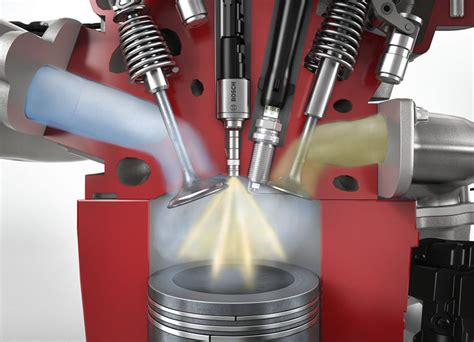
We should first start with “What makes direct fuel injection different from other forms of fuel injection?” Fuel injection systems in gasoline engines have evolved over the years due to the constant search for increased fuel economy and reduced exhaust emissions. Many of the improvements coincide with the increased computing power of the Engine Control Module (ECM) aka engine computers. Beginning early in the ‘80s, Throttle Body Fuel Injection (TBI) was introduced as a more precise way to deliver fuel compared to carburation. TBI systems boasted improved cold starting, better throttle response, improved power, and the ability to adapt to different elevations and operating conditions. TBI systems use one to four fuel injectors in a central location in the intake manifold and the fuel is drawn into each cylinder when the intake valves open. The next step in fuel delivery was Port Fuel Injection (PFI), which moves the fuel injectors closer to the intake valve of each cyl ... read more
Posted on 10/1/2023

What do I need to know about shocks and struts? Most modern vehicles provide the operator with a smooth and comfortable ride, thanks in part to your vehicle’s suspension system. A critical component of the vehicles suspension system are the shocks and struts. Often overlooked, these parts play a vital role in ensuring not only your comfort but also your safety on the road. Let’s explore what you need to know about shocks and struts. The Basics: Shocks vs. Struts Before getting into why you would need to replace either, it is important to understand the difference between shocks and struts. While they provide the same function in a vehicle, to dampen suspension oscillations, how they are incorporated into the vehicle suspension system is very different. Shocks (Shock Absorbers) These are usually hydraulic, and gas filled cylinders that control the bouncing motion of the vehicle tires and ... read more
Posted on 9/25/2023

ADAS (Advanced Driver Assistance Systems) In today's rapidly evolving automotive landscape, technology isn't just about enhancing entertainment and connectivity—it's about saving lives, improving convenience, and revolutionizing the way we drive. One of the most remarkable advancements in this realm is the implementation of Advanced Driver Assistance Systems, or ADAS. These systems are poised to shape the future of transportation, making our roads safer and our journeys more efficient. Understanding ADAS: What Are Advanced Driver Assistance Systems? ADAS refers to a suite of safety features and technologies integrated into modern vehicles to assist drivers in various ways. These systems use sensors, cameras, radar, and advanced software algorithms to provide real-time feedback, warnings, and, in some cases, autonomous control to enhance driving safety and comfort. Key Components of ADAS: ... read more
Posted on 8/4/2023

Active Fuel Management (AFM) is General Motors version of a cylinder deactivation system. Cylinder deactivation is used to increase fuel economy of higher displacement engines while cruising down the highway in light load conditions when the extra power is not needed. During light load conditions the PCM (Powertrain Control Module) can shut down predetermined cylinders by disabling the camshaft lifters and shutting off the fuel injectors. Which prevents those cylinders from consuming incoming air and fuel. Thereby reducing fuel consumption. Think of it this way. First, you give your teenager a soft drink with a large straw. The pop consumption will increase. Now if you give the same kid the soft drink with a tinny tiny coffee straw the pop consumption will decrease. Why not just keep it simple and install small engines in all vehicles? Well, a four-cylinder engine in your pick-up or large SUV would leave you craving additional power when accelerating. Add a trailer to that same vehicl ... read more
Posted on 7/6/2023
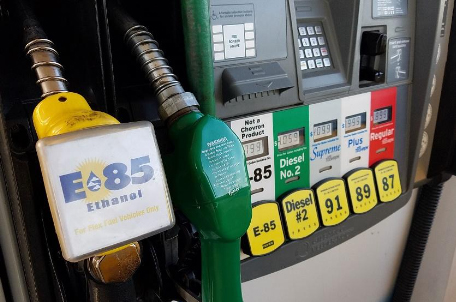
Flex Fuel Vehicles Many modern vehicle manufacturers offer models that can run on multiple fuel options, a.k.a Flex Fuel Vehicles (FFV). Flex fuel vehicles are vehicles that have engines designed to run on fuel ranging from regular gasoline to higher, ethanol content fuels like E85 and E15. How do you know if your vehicle is rated for flex fuel? Look for a yellow fuel fill cap, a yellow tag around a capless system, badges on the side of the car, or in the vehicle owner’s manual. Only run the higher ethanol content fuels in vehicles designed for flex fuel. Although most 2001 and newer vehicles can be operated safely on the low-level ethanol 87-octane fuel that contains up to 10% ethanol. Using ethanol blended fuel in older vehicles and small engines, like lawn mowers, can cause damage to some fuel system components. It is best to use non-ethanol fuels in these vehicles and equipment. What is ethanol? Ethanol is an ethyl alcohol fuel source distilled down from mostly corn. The sam ... read more
Posted on 6/5/2023
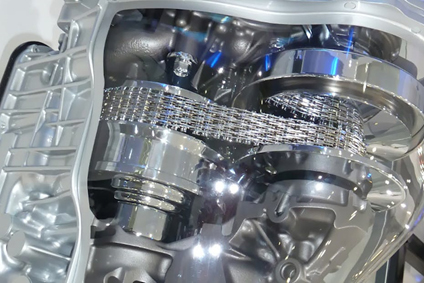
What is a CVT Transmission? CVT is short for Continuously Variable Transmission. They are a different twist on the automatic transmissions most of us are familiar with. Many auto manufacturers are now incorporating CVT transmissions into their smaller cars and light SUVs. The original concept for a CVT transmission was from none other than Leonardo DaVinci back in 1490. It wasn’t officially patented in the US until 1886 by Daimler and Benz. CVT transmissions are used in more than just automobiles. They are very common in snowmobiles, ATVs (Four wheelers), and UTVs (Side by sides). Mainly due to the simplistic design and compact size. What makes a CVT different from a regular automatic transmission? The short answer is gears. A regular automatic transmission starts out in a low gear and gradually shifts to higher gears as the vehicle accelerates. Think of it as an automatic version of a manual transmission. Each gear has a distinct, non-changing, gear ratio associated with it. If ... read more
Posted on 5/4/2023
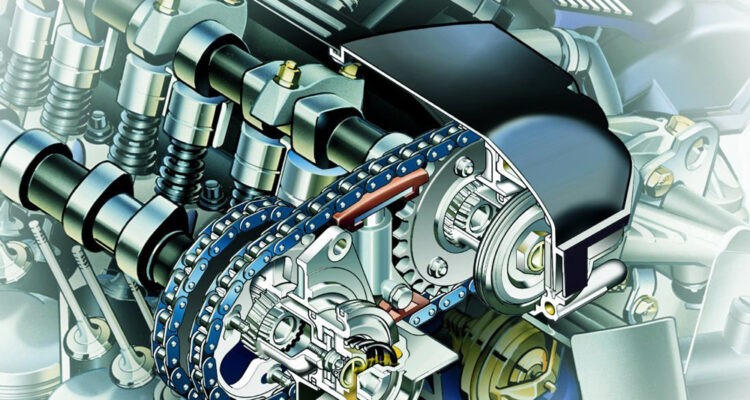
VVT (Variable Valve Timing) and VVL (Variable Valve Lift) Systems Many modern vehicle manufacturers incorporate VVT (Variable Valve Timing) and/or VVL (Variable Valve Lift) systems in their engines to gain maximum fuel efficiency while maintaining power output and smooth engine operation. To understand how this technology benefits the driver, we need to understand the basics of engine operation. A vehicle engine is essentially an air pump that controls the explosion from a fuel/air mixture and transfers the explosion energy into rotating movement. Thus, propelling the vehicle forward. Nearly all vehicle engines use the four stroke, Otto engine design. See illustration. The valves control the flow of air/fuel into the cylinder and the exhaust out of the cylinder once the combustion process takes place. They must be timed to open and close at precisely the correct points of crankshaft rotation to maintain engine op ... read more
Posted on 3/23/2023

It’s time to climb up here on this soap box and hold up a big red and white target. Time to dip my toes in the muddy water of LED lights. Just to clarify, this article is a matter of opinion, with some facts thrown in for good measure. Let’s get started. Are LED lights legal? Yes, no, and sometimes both. Usually if there is some doubt, we can refer to federal and/or state laws for clarification. FMVSS (Federal Motor Vehicle Safety Standards) section 571 explains motor vehicle requirements and is currently about 1200 pages. SAE (Society of Automotive Engineers), NHTSA (National Highway Traffic Safety Administration), and DOT (Department of Transportation) all have some input and regulatory oversight to those standards. What’s clear is that any modification to a vehicle that changes the way it was released from the manufacturer would be considered a violation of federal law. Unless those modifications meet the safety stan ... read more
Posted on 2/28/2023
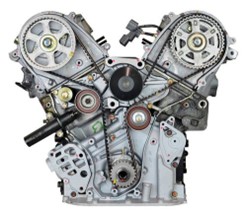
All four stroke Otto cycle engines use some kind of timing belt (Black toothed belt in the picture), chain, or gears to keep all of the moving parts inside the engine in alignment and moving in the correct order. Each cylinder in an engine has four distinct events that complete one power cycle; intake, compression, power, and exhaust strokes. The piston goes up and down two times per one power cycle. Valve openings and closings must be timed to the piston position and are controlled by camshaft rotation (Large gears on the top are attached to the camshafts). While the piston osolations are controlled by crankshaft rotation (Small gear on the bottom is on the front of the crankshaft). The crankshaft makes two complete revolutions for each single revolution of the camshaft. These components must work in concert with each other for the engine to run smoothly and efficiently. If this alignment gets out of sync it can cause numerous problems. ... read more